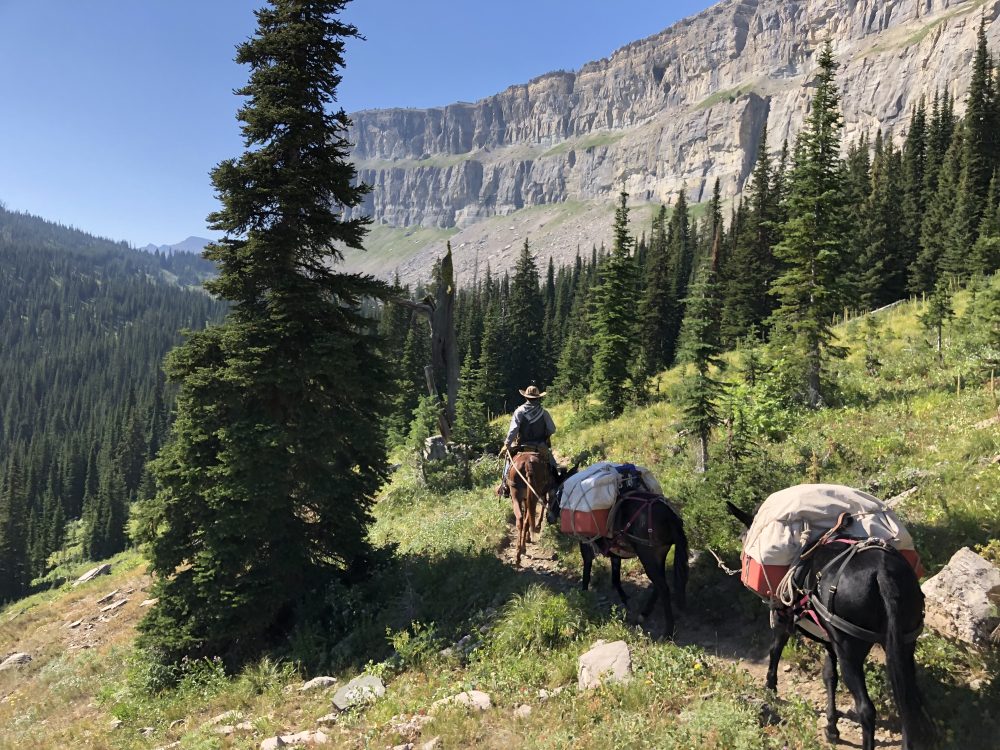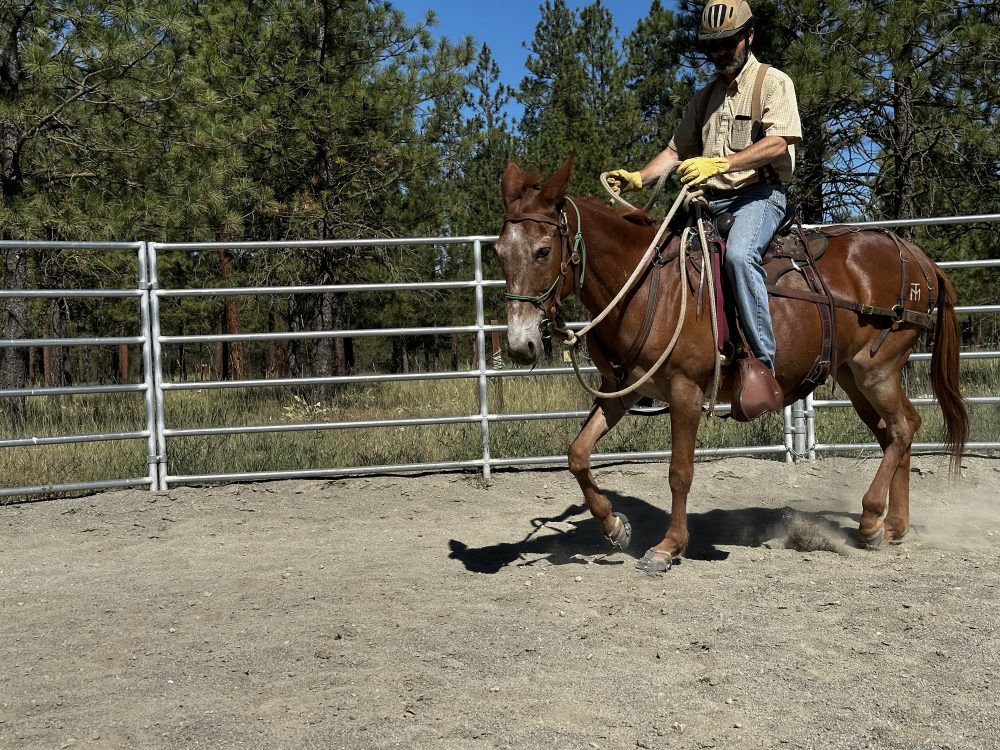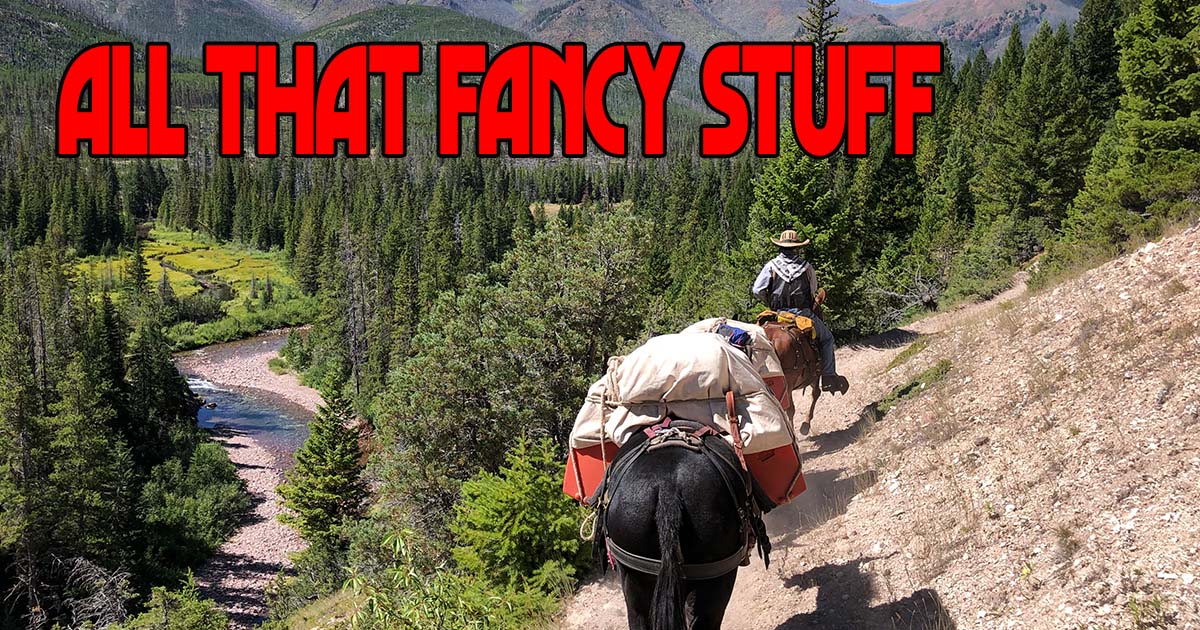All That Fancy Stuff
I recently read one of Ty Evans’ reflections on training and the standards we should aim for with our animals. a sentiment he often hears is “I don’t need any of that fancy stuff; I just want to go down the trail,”. At one point I was one of the people who said it. I used that exact phrase far too often, not realizing how naive I was.
I used to call “fancy stuff” what Ty calls control. This “fancy” training includes yielding the fore and hinds, flexing softly, or being able to smoothly side-pass on command. When I’m deep in the backcountry, miles from the trailhead with no cell service and no quick access to help, I want as much control as possible. Out there, “good enough” simply isn’t enough. That level of control, or as Try calls it, “handiness,” is what I now strive for in every bit of groundwork, ride, or training session.

I ask a lot of my animals. I’m not one for “intense,” but the places I prefer demand readiness. Steep country and narrow trails are the gatekeepers to the best fishing spots! My animals need to be as handy as possible for my peace of mind, and that’s only achievable with serious work long before we leave the barn.
A Philosophy
Ty echoes this need for readiness in his training philosophy: “If the mule can’t operate and maneuver accurately on flat ground, how the heck are they going to do it in the mountains and rough country?” His words resonate with me. When I’m in the high country, I need my mules at their best. To get there, I need to work towards that goal when in familiar conditions at home. During my clinics, I stress the importance of mastering a solid whoa, go, and steer. But I don’t stop there—I want those responses to be as effortless as possible. That means having my animals centered, balanced, and able to respond calmly and lightly to my seat, legs, and reins. This isn’t about being fancy; it’s about being safe.

Safety means having an animal that’s light and calm in the bridle. I want a critter that’s easy to stop, easy to turn, and easy to back. If I have softness in these basics, I can count on that softness translating to side passes, pivots, and other moves that require control of the front and hindquarters. This is like driving a truck with a big engine, great brakes, and power steering. Just as we want control when towing a trailer on mountain roads, we should expect no less control when we’re in the saddle, whether we’re at home or navigating unpredictable terrain.
Over time, I’ve learned more about what my animals are capable of. Before I knew how to ask for more, I hesitated to challenge them beyond the basics, worried that asking for more might bring a response I couldn’t handle. That intimidation—my reluctance to rise to their potential—kept me out of some remarkable areas requiring a little extra work to get to.
Pushing Ourselves
When pushing our limits feels intimidating, a good trainer can be your best ally. I’m a fan of Ty Evans because he speaks in a way I understand, but for you, it might be someone else. The important thing is to find someone whose guidance helps you rise to meet your animals where they are—and where they can go. Strive to be the person your animal deserves.
For those looking to build control and readiness in their animals, consider practicing and refining the foundational skills: a responsive whoa, rotating on the fore, and a smooth backup. These exercises can set the stage for a more advanced partnership, where trust and responsiveness grow hand-in-hand with control.
For more thoughts on these topics, check out my book, The ABCs of Trail Riding and Horse Camping at Amazon. You can also visit my website; TrailMeister.com for more resources. You’ll find info for building the skills and confidence that make exploring the backcountry as safe as it is rewarding.



